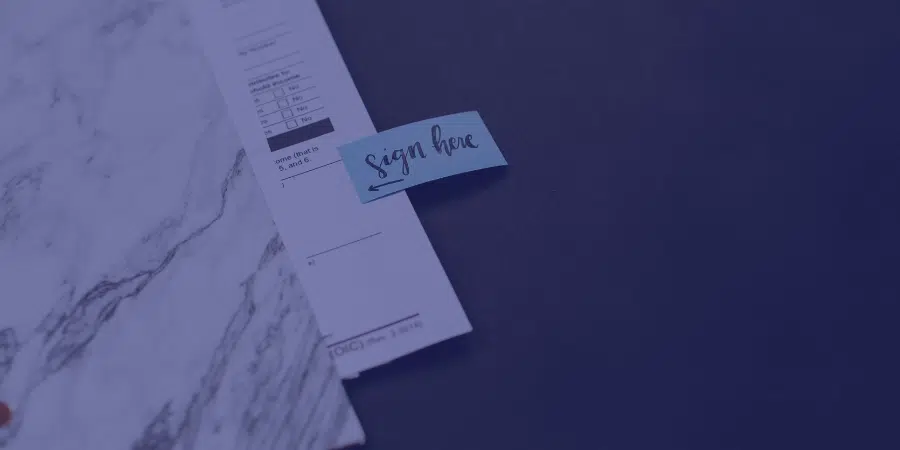Hiring is an important part of growing your dance studio. Finding great instructors will set you apart and help you attract new students. Therefore, getting off on the right foot with your new dance teachers is important. A dance studio teacher contract can help you establish a positive working relationship from the start. Here’s what it should include.
10 Basic Elements Of A Dance Studio Teacher Contract
A teacher agreement is beneficial for everyone. Whether the length of the contract is for a season or an entire year, it gives you and your teachers stability.
Your teachers will be encouraged to fulfill their contracts, saving you the headache of someone quitting unexpectedly. Plus, they will have peace of mind knowing when and how they’ll be compensated for the work they do.
As you begin drafting a professional dance company contract, think about these important elements.
1. Compensation
A clear plan for compensation is one of the most important parts of a contract. This includes hourly wages, as well as rates for overtime and substitute teaching. Some studios also like to include bonuses or perks for recruiting new students.
The compensation portion of your contract will mainly discuss how much the teacher will be paid. Make sure it’s clear, for all parties involved.
2. Leave policies
Leave is typically classified under vacation or sick time.
If any of your teachers are full-time, consider whether you’ll provide paid time off in the form of vacation days. If so, how much advance notice will you need for requests? Will you also offer unpaid vacation time for part-time teachers?
Sick days are another important aspect of leave policies. It’s important to note that many states require you to provide a certain amount of paid sick days for full-time employees. You should also include standard guidelines or main point of contact for calling in sick. This will ensure that you have enough time to find a substitute for your classes.
3. Service expectations
This section of a contract should clarify overall expectations. Provide as much detail as possible about the number of classes per week or month they’ll teach, as well as any other engagements. This may include recitals, competitions, and other studio related events. Note how you and the teacher will agree on increasing or modifying their class schedule.
Service expectations may also include any specifications about methods of teaching. This may be based on a specific curriculum or class format. It can also cover conduct guidelines regarding professionalism.

4. Non-compete clauses
As with any business, when you open a dance studio, you’ll find other studios compete in one way or another. This may be to gain potential students or it could be at regional dance competitions. For this reason, a non-compete clause may be beneficial to your studio.
If appropriate, a non-compete clause can limit your teachers to several different situations. For example, you may prohibit them from choreographing for a studio within “x” amount of miles of your studio or starting a studio within “x” amount of miles. This usually includes a timeline for how long the non-compete is in place, generally anywhere from a few months up to a year.
5. Confidentiality clauses
Confidentiality clauses deal with private information.
Include this in your contract to ensure that your teachers don’t disclose important and private details about your studio, as well as the private information of your students (and their parents).
6. Dress code
Some studios maintain a strict dress code. This may be for every class or just for specific classes, such as ballet.
If you require a particular color, cut, or style of dance wear for your studio, be sure to include this information in your contract.
7. Early termination
Whether the early termination of a contract is prompted by you or the teacher, you will need to include the terms so the appropriate course of action is clear from the beginning.
Most dance studio owners include language about the right to terminate a teacher at any time for a variety of reasons. This typically has to do with misconduct or refusing to follow the contract that has been agreed upon.
On the other hand, if a teacher wishes to terminate a contract early, you may want to include certain provisions. This could be a fee to compensate for the inconvenience of searching for a replacement.
8. Reimbursements
If you think your teachers may need to provide up-front costs at any time, you should have a method for providing reimbursements. This may be for costumes or other competition fees and necessities.
Whatever the reason, provide detailed instructions for submitting a reimbursement request, as well as a timeline and manner in which they’ll receive their money. Documenting this process not only eliminates a run around in the time of the event, but also reassures teachers that they will be taken care of for any expenses they may need to cover at first.

Additional Factors To Consider
Different situations can change the elements of your dance teacher contracts. Some agreements may include the following variations.
9. Types of employment
In general, most dance studio employees are not full-time. This means they are paid by the hour or per class instead of earning an annual salary. Keep this in mind as you draft your contract.
If your dance teachers are only teaching one or two classes at your studio, they will most likely have to juggle multiple jobs. In this situation, your non-compete may look very different. Your pay structure and any benefits will look different.
Each situation is unique, so ensure you review every contract before sending to a new hire.
10. Professional licenses
Professional licenses are often needed to teach certain classes. While this varies from state to state, your teachers may need to meet additional requirements if they teach classes for children, as well as pregnant women or students with disabilities.
If this applies to your studio, it’s a good idea to stress the importance of teachers maintaining those licenses and remaining in good standing.
Quick Summary Guide for Drafting Dance Teacher Contracts
| Suggestion | Why It’s Important |
|---|---|
| Include a termination fee clause | Prevents sudden contract termination and offers financial protection for both the instructor and studio. |
| Outline the responsibilities of both the instructor and studio | Ensures clarity and avoids misunderstandings about duties and expectations. |
| Create a detailed contract template | Provides a consistent framework for all dance teacher contracts, ensuring nothing is overlooked. |
| Specify guidelines for using personal accounts and social media photos | Maintains professionalism and protects the studio’s reputation online. |
| Require parental consent for minors | Legally ensures that minors are allowed to participate in dance activities. |
| Address intellectual property rights | Clarifies ownership of choreography and other creative works. |
| Keep a record of all communications | Helps resolve any disputes that may arise by providing clear documentation. |
| Set a clear end date for the contract | Defines the contract duration and helps plan for renewals or terminations. |
Learn More About Running A Dance Studio
The hiring process can take time. The Studio Director’s dance studio software can help you manage class scheduling, marketing emails, billing, and much more. By streamlining these types of tasks, you can focus your energy on other important aspects of your business, like hiring.
If you’re looking for more information about running your own dance studio, check out our guide on Dance Studio Ownership 101. This eBook discusses the myths to avoid and secret success strategies to follow to help your studio grow.


